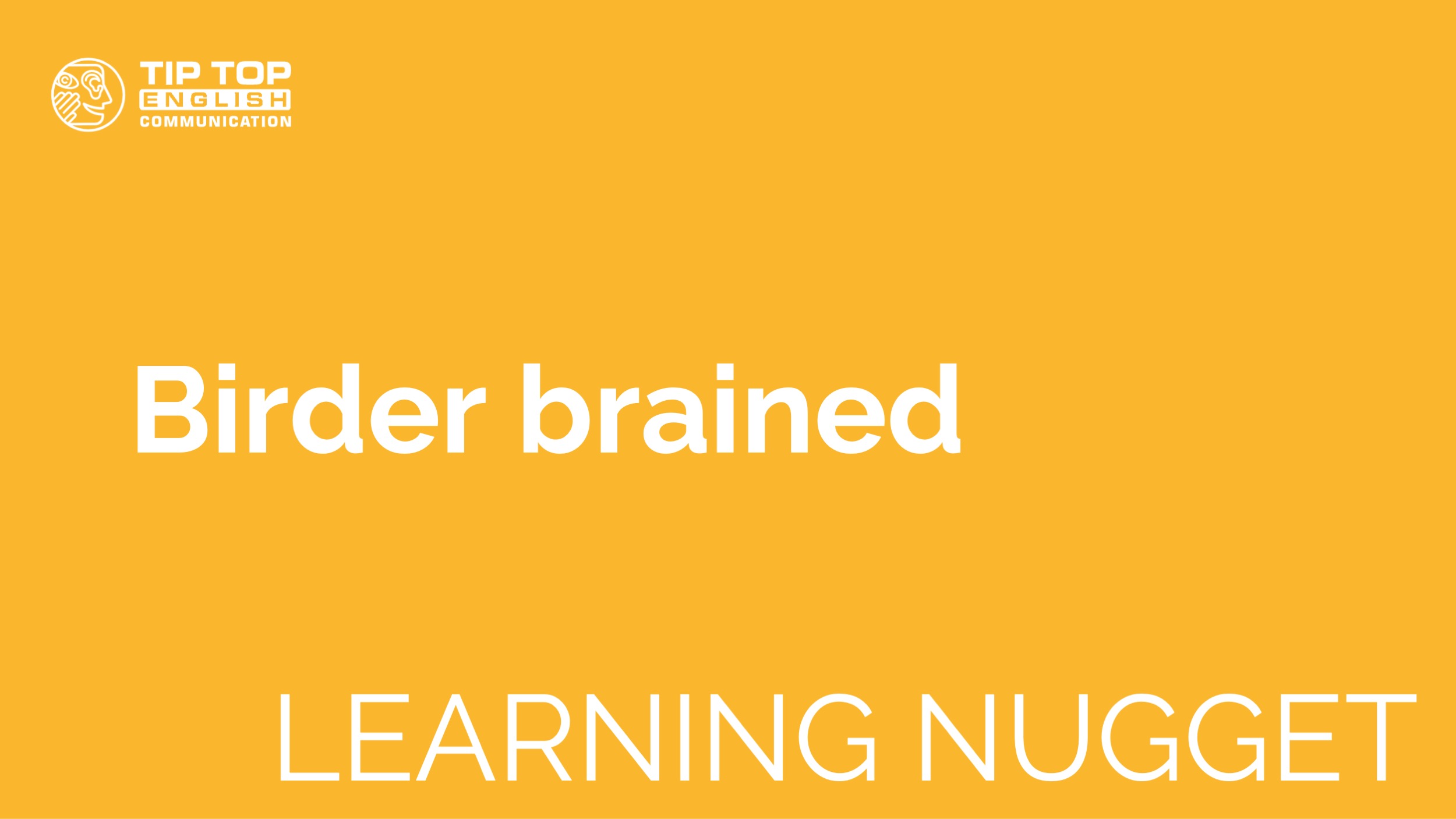Birder brained
Most people are aware that birding – an activity where a person or group observes and identifies birds out of scientific and/or personal interest – is a hobby for some. Maybe you even own a pair of binoculars and a bird identification book yourself.
But many don’t know exactly how big the hobby is. Millions of people per year take trips with the main goal of seeing new bird species. In the U.S. alone, birding is a multibillion-dollar industry. And, like many outdoor activities that can be done alone or in small groups, birding’s popularity surged during the pandemic.
In this Learning Nugget, get to know some of the most interesting history and vocabulary associated with birding and where the best spot to do it in Germany is.
How did birding become popular?
Throughout most of the 1800s, many believed there was only one way to correctly identify a bird: kill it and examine it closely. The technology to see small markings on birds that were up in trees or at a distance was simply too delicate, hard to move, and expensive to take into the landscapes where most birds lived.
If you’ve ever seen the famous paintings of North American birds by John James Audubon (1785-1851), they were all based on birds he had killed in the wild.
Since many people who are likely to enjoy observing birds aren’t likely to want to kill them, it’s no surprise that bird identification didn’t become a popular hobby until there was a gentler way to do it that was also affordable and practical. So, though an interest in birding grew in the early 1900s in North America and the U.K., it only really started to take off after World War II when binoculars became more affordable.
As international travel became easier for the general public, more and more people began taking trips specifically for birding. Now there are many businesses dedicated specifically to organizing birding vacations.
Another way modern technology has made birding more popular is the rise in amateur photography. The equipment needed to get photos of birds from a distance has become ever more available and affordable. With an increase in photos of spectacular birds taken by everyday people showing up on social media, more people have gotten interested in seeing those birds themselves.
Not everyone who watches birds is a birdwatcher
Many native English speakers don’t even know the terms „birding“ and „birder“ and think anyone who looks at birds for a hobby is called a „birdwatcher.“ However, most serious birders see a big difference between birders and birdwatchers.
The easy way to describe the difference between birdwatchers and birders is to say that birdwatchers are passive (let the birds come to them) and birders are active (they look for birds).
For example, birdwatchers might look out their window at a feeder or take binoculars along on a walk as an afterthought while a birder would visit specific habitats or areas where birds they’ve never seen before are likely to be.
But there are different categories of birders, too. The most intense birders are called „twitchers,“ and they have only one goal: To see as many bird species as they can as quickly as possible. Unlike some birders who take time to document the behaviors of the birds and the habitats they find them in, twitchers will typically only look at a bird long enough to identify it so that they can add it to their list and move on.
The term „twitcher“ is often an insult in the birder community. Due to their obsession, twitchers tend to ignore their impact on the environment and individual habitats as they seek out new birds for their lists.
Germany’s greatest birding destination
Though places like the Black Forest and nature reserves near Germany’s large rivers have a great variety of interesting bird species, the paradise for birders in Germany is the Wadden Sea (Wattenmeer). This area on the northern German coastline where receding tides leave huge areas of mud and sand flatsteeming with life is a haven for shore birds.
It’s also a place where many birds take breaks during migrations, meaning the types of birds you can see there changes often. One birding website said birders can reasonably expect to see up to 80 bird species in one trip if they go at the right time of year.
If you’re interested in more great birding destinations in Germany, Wild Bird World has a list of seven of the best.
Vocabulary
birder brained – albern
birding – Vogelbeobachtung
observe – beobachten
identify – ermitteln, identifizieren
scientific – wissenschaftlich
binoculars – Fernglas (immer Plural)
bird species – Vogelarten
surge – anschwellen, zunehmen
associated with – etw. verbinden mit
popular – beliebt
examine s.th. closely – etwas gründlich untersuchen
markings – Kennzeichnungen
at a distance – in der Ferne
enjoy observing (enjoy + ing-form) – sich daran erfreuen zu beobachten
aren’t likely to want to kill – möchten wahrscheinlich nicht töten
gentler – freundlicher
to take off – in Fahrt kommen
general public – Allgemeinheit
affordable – erschwinglich, bezahlbar
look out their windows at s.th – aus dem Fenster auf etwas schauen
dedicated to – widmen
a feeder – eine Futterstelle
as an afterthought – nur am Rande
habitats – Lebensräume
unlike – anders als
behavior – Verhalten
an insult – eine Beleidigung
due to – wegen
variety – Vielzahl, Vielfalt
receding tides – zurückgehende Flut
teeming with – es wimmelt von
sand flats – Sandwatt
migrations – Migrationen
reasonably expect – darauf vertrauen
Excite Your Senses

On our YouTube channel, you can follow along as a native speaker reads this month’s Learning Nugget accompanied by music and pictures.
